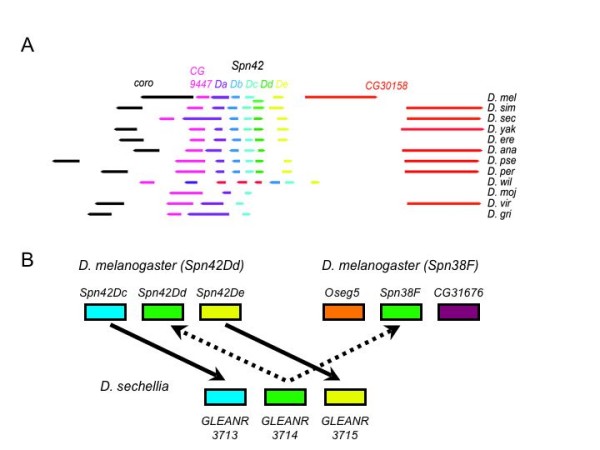Figure 2.

The structure of the Spn42D gene cluster. (A) The top line shows the 5 Spn42D serpin genes in D. melanogaster: Spn42Da (violet), Spn42Db (blue), Spn42Dc (cyan), Spn42Dd (green), Spn42De (yellow). These genes are flanked proximally by coro (black) and CG9447 (magenta) and distally by CG30158 (red). The orthologous genes in the other Drosophilid species are shown in successive lines. The D. willistoni Spn42 complex lacks a Spn42Dd orthologue and contains an insertion of 3 transcripts that are not syntenic with the other species, GK20759-GK20758 (red). Putative Spn42Db orthologues for D. mojavensis, virilis and grimshawi are given in Table 1, but omitted from this Figure 2 as their scaffolds are not yet located within the genome assembly. (B) The D. sechellia serpin GLEANR3714 was flagged by homology as a possible orthologue of both Spn42Dd and Spn38F. Syntenic analysis, however, shows that the adjacent transcripts from the Spn42D cluster, Spn42Dc and Spn42De, are plausible orthologues of the adjacent D. sechellia genes GLEANR3713 and GLEANR3715; while the adjacent genes to D. melanogaster Spn38F (CG9333 and CG31676) show no homology to the adjacent D. sechellia genes. By these criteria, GLEANR3714 is the orthologue of Spn42Dd, not Spn38F.
